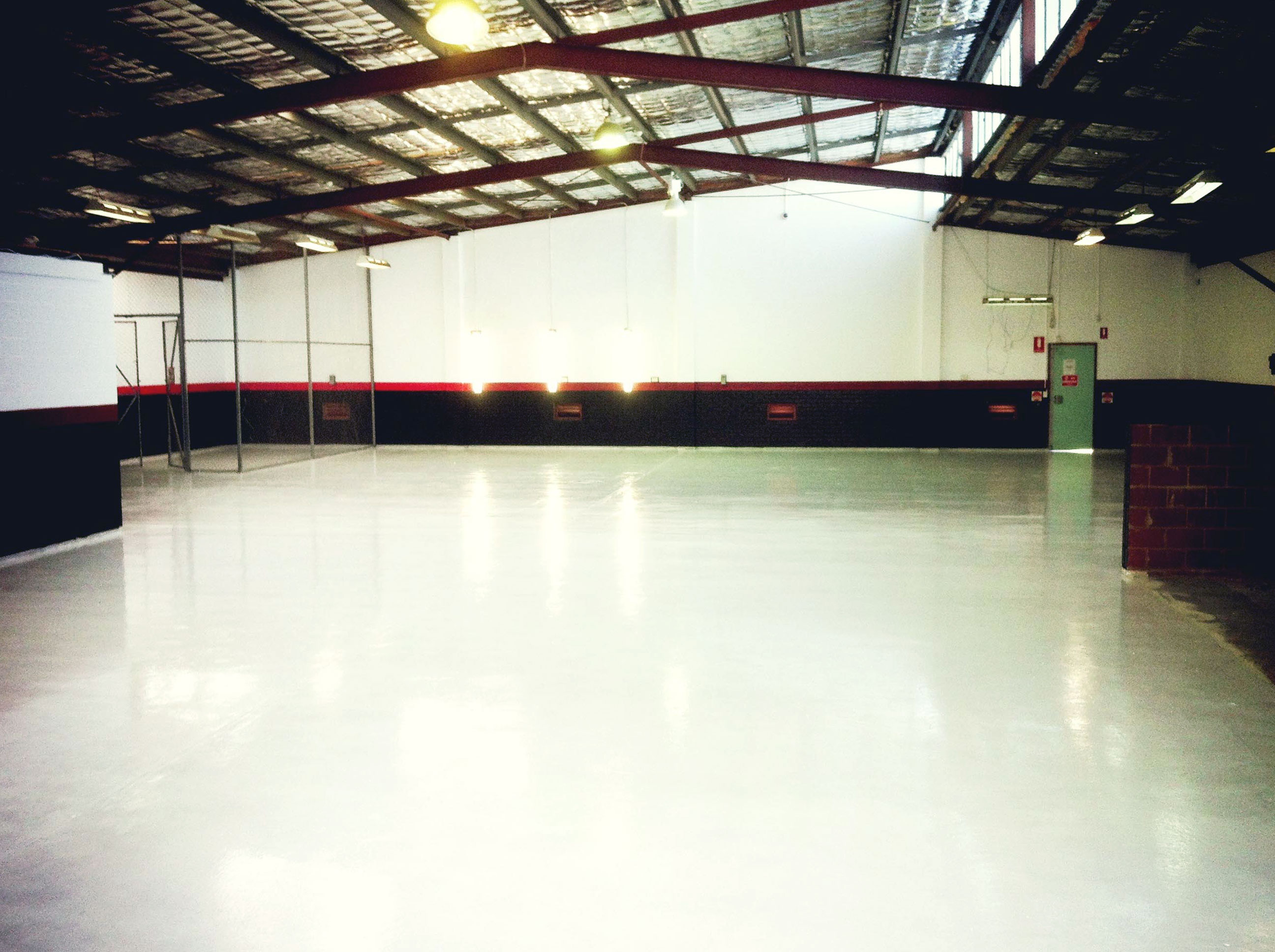100-Solids: The Secret to Less Labor and Less Time on Your Next Install
(A glossary of terms, article 4 in the series)

2017-10-11
Why is the industry abuzz about 100% solids, whether polyurea or epoxy coatings? And why do we feature 100% solids in so many of our concrete floor coatings?
It's not because it's the "trendy product," as this article put it; in fact, one might say that Citadel set the trend by adapting the material, once only available for big industry usage (think railroad tank cars), so that a flooring installer and his team could apply it to a garage floor – or auto dealership showroom, or hospital or school hallway, or any of dozens of common applications – with simple, accessible tools.
Meaning, your client gets to coat the concrete floor of his manufacturing facility with the same scratch- and chemical-resistant stuff once reserved for protecting pipes and tanks for big oil companies.
But before we jump into why 100% solids, first: what are 100% solids?
When coatings are applied, two thickness measures apply. One is wet film thickness (WFT), measured before the coating has dried, and the other is dry film thickness (DFT), measured after.
The percent solid refers to the percentage of coating thickness that remains after it has finished drying, or the difference between the WFT and DFT. Usually, a percentage of solid is lost during the drying process as component solvents evaporate, and thickness is reduced. To compensate, more coats are added until the desired thickness is achieved. For example, let's say the desired finished thickness is a DFT of 20 mils. A 50% solid would require two coats at 20 mils of thickness to achieve this result, dry.
This is not the case with 100% solids. 100% solids maintain the same level of thickness from the time they are applied to the time they have dried, hence the name.
The most obvious benefit of a coating that dries at the same thickness as wet is easy to see: less required coatings, meaning less material needed and less labor to apply it. Also, "fewer coats mean less chance of inter-coat adhesion problems and reduced time for the coating process, since there are no multi-step curing procedures in between coats," this US Coatings article states.
Although one of the drawbacks of working with 100% solids is its typically higher cost, this investment is countered by downtime saved by a single-coat application and less associated labor costs. On an installation-by-installation basis that may not seem like huge time and money savings, but they add up over the course of the year to significantly impact your bottom line.
Time saved is not simply from less coats applied; 100% solids also dry rapidly. They can be walked on in a matter of hours. Reduced downtime and quick project turnarounds appeal to customers who need their floor back in service fast—and free your team to move on to other projects.
Also, a 100% solids polyurea contains no volatile organic compounds (VOCs). As mentioned above, formulas with less than 100% solids lose thickness as solvents evaporate into the air. These evaporating solvents (VOCs) can create dangerous environments in confined spaces and health hazards for workers. Protect your team with 100% solids.
100% solids save you time and labor, cure quickly and won't fill the air with dangerous VOCs. They are not, however, a one-size-fits-all solution. To learn whether 100% solids are the 100% perfect fit for your project (couldn't resist), click here to schedule a call with one of our experts for a free consultation on your best-fit floor coating system solution.
Latest News
How to Maintain Your Concrete Grinder
Gain Customers and Referrals in 4 Easy Steps
Ready for the Summer Rush? 4 Ways to Prepare
6 Cold Weather Safety Tips for Installers
How to Remove Salt Stains from Concrete
Testimonials
Every time I call I get to talk to someone, and I always have an answer within 20 minutes. That's awesome.
Client: Terry C.

